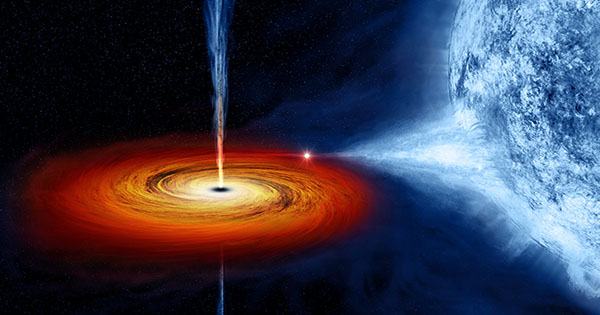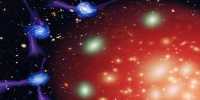The IceCube project scientists found an exciting connection earlier this year. A neutrino, a small fundamental particle, was discovered with an amazing amount of energy, far more than our particle accelerators can produce. One of the most spectacular catastrophes in the cosmos, a star ripped apart, is suspected as the culprit. Others, however, are skeptical. A supermassive black hole destroyed a star that ventured too close in a galaxy 750 million light-years away. AT2019dsg is the name of the tidal disruption event (TDE). This heinous event unleashed an outpouring of energy equivalent to the Sun’s output per 30 million years. That is a lot of information. However, researchers claim that linking it to the neutrino is insufficient.
According to The Astrophysical Journal, a neutrino with that much energy would require a 1,000-fold more powerful explosion. The researchers assumed that the neutrinos ejected by the black hole as it ate the stars in a haphazard manner were ordinary neutrinos. That is the first time I have seen anything quite like it. In a statement, co-author Dr. Kate Alexander, a study co-author and postdoctoral fellow at Northwestern University said, “Instead of seeing the dazzling jet of material needed for this, we find a fainter radio outflow of material.” “Instead of a strong firehose, we have a gentle breeze.”
Such winds are comparable to those seen in Type Ib and Type Ic (pronounced One-b and One-c) supernovae, which collapse under their own weight after running out of fuel to fuse and internal radiation can no longer push against gravity. Then they are gone. Light and matter (including neutrinos) are released into the universe.
“Why haven’t we seen neutrinos connected with supernovae at this distance or closer if this neutrino came from AT2019dsg? They are a lot more common, and they have similar energy velocities “Dr. Yvette Cendes of Harvard and the Smithsonian Center for Astrophysics, the study’s primary author, explained.
The Atacama Large Millimeter/submillimeter Array (ALMA) and the Karl G. Jansky Very Large Array (VLA) radio measurements of the event used in this study (ALMA). They were able to better grasp how this TDE is unfolding and develop a better model for the types of energy that are being released as a result of the data. While the research makes a strong argument that this neutrino is not from AT2019dsg, the team emphasizes that there is still a lot to learn about TDEs in general and this event in particular.
“I’m sure we’ll check in on this one again,” Cendes added. “This specific black hole continues to eat.” Then there is the matter of where the neutrino came from if it was not from a TDE.
















